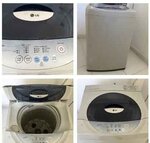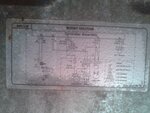nuwands
Newbie level 6
- Joined
- Jul 7, 2013
- Messages
- 12
- Helped
- 1
- Reputation
- 2
- Reaction score
- 1
- Trophy points
- 3
- Location
- Matara, Sri Lanka
- Activity points
- 87
I am designing a new control circuit for my washing machine. It is an LG wf-650 automatic washing machine. What I can't understand is how to switch from WASH to SPIN. There are no electrical means to switch. The motor agitates when the capacitor is switched from one phase to other. But how to perform the spinning? Please help!



